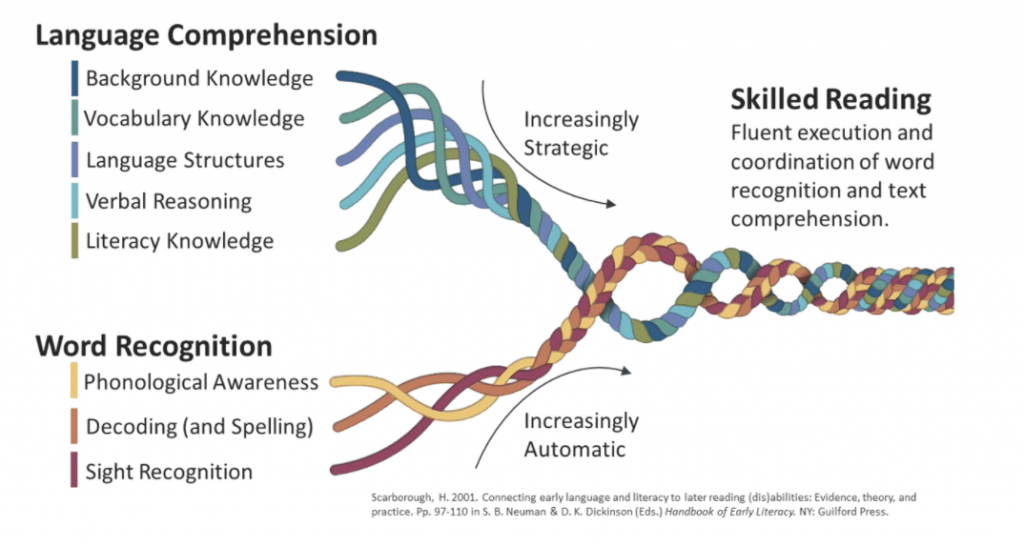Structured Literacy™ is the term used, since 2016, by the International Dyslexia Association to describe and consolidate the many names for a research-based approach to teaching reading and writing. It is an explicit, systematic and cumulative approach that decades of research shows is a highly effective way to teach dyslexic students. This research evolved from an approach developed by Dr Samuel Orton and Anna Gillingham in the 1930’s and 40’s.
While Structured Literacy has its origins in supporting those learners who have dyslexia, it is now widely acknowledged as good practice for any learner, especially our neuro-diverse learners. Decades of robust, peer-reviewed research has been conducted about how the brain actually learns to read and write. Our New Zealand literacy programmes have been developed using a ‘Whole Language’ or ‘Balanced Literacy’ ideology which assumes that reading and writing are acquired in the same way as oral language. The science now shows us that is not correct and this is reflected in our falling literacy rates. The good news is that there is change on the horizon, with our Ministry of Education recently acknowledging this research and indicating that our literacy landscape needs to, and will, move in a Structured Literacy direction. While change takes time, we celebrate this news for our learners.
What is a ‘Structured Literacy’ approach?
A Structured Literacy approach recognises that there is a science to the way we learn to read and write and therefore literacy instruction needs to be delivered in an explicit and systematic way. ‘The Simple View of Reading’ research shows us that strong readers need both decoding and comprehension of language, neither of which are developed through the traditional techniques taught using a whole language 3-cueing system. A structured literacy approach ensures that every child is carefully supported through each stage of learning to read and write by first building, and then building on, the essential foundations they need to become confident and capable readers and writers.

What is ‘The Simple View of Reading’?
The ‘Simple View of Reading’ shows that reading comprehension is the product of strong decoding and language comprehension. For a learner to be a successful reader, they need to be equipped with skills in decoding and in understanding the language they are using.

What Does Explicit Mean?
Explicit instruction means that this is teacher-led. Each session your child will be explicitly taught the appropriate concept in a highly supportive learning environment with learning experiences designed to scaffold your child to achieve mastery.
*Mastery takes time and concepts can be covered over several sessions. Revision is built into every session to ensure that previously covered concepts are reviewed.
What Does Systematic Mean?
The learning is delivered in a carefully planned sequence ensuring that concepts are being taught at the appropriate stage for the learner given what they can already do and what they have yet to learn.
What Does Cumulative Mean?
The learning is planned in such a way that each concept is taught to build on previously mastered learning. This helps to consolidate previous learning and to scaffold new concepts.
What Does Multisensory Structured Language Mean?
Multisensory Structured Language is based on the same principles as Structured Literacy with the addition of including the flexible approach of bridging auditory, visual and kinesthetic connections to strengthen learning of reading and writing.
What is the ‘Whole Language’ approach?
The ‘Whole Language’ approach is a method of teaching children to read and write based on ideology rather than research. It is based on the assumption that students learn to read and write in the same way as they learn to speak so programmes are built around exposure to texts and a literature-rich classroom. Learners are taught to learn whole words, such as sight words, rather than mapping them through letter-sound relationships and morphological structure and children’s knowledge is expected to develop naturally over time. Learners who have been taught using this language approach can experience difficulty with reading and writing. This approach also relies on a ‘3-cueing’ system where learners are encouraged to make educated guesses about what they are reading using the following 3 cues;
We encourage parents to go to the following websites for further information:
Or to Read:
Equipped for Reading Success – David Kilpatrick
There are also many Structured Literacy Facebook groups, based both here in Aotearoa and abroad, that contain lots of information about Structured Literacy.
